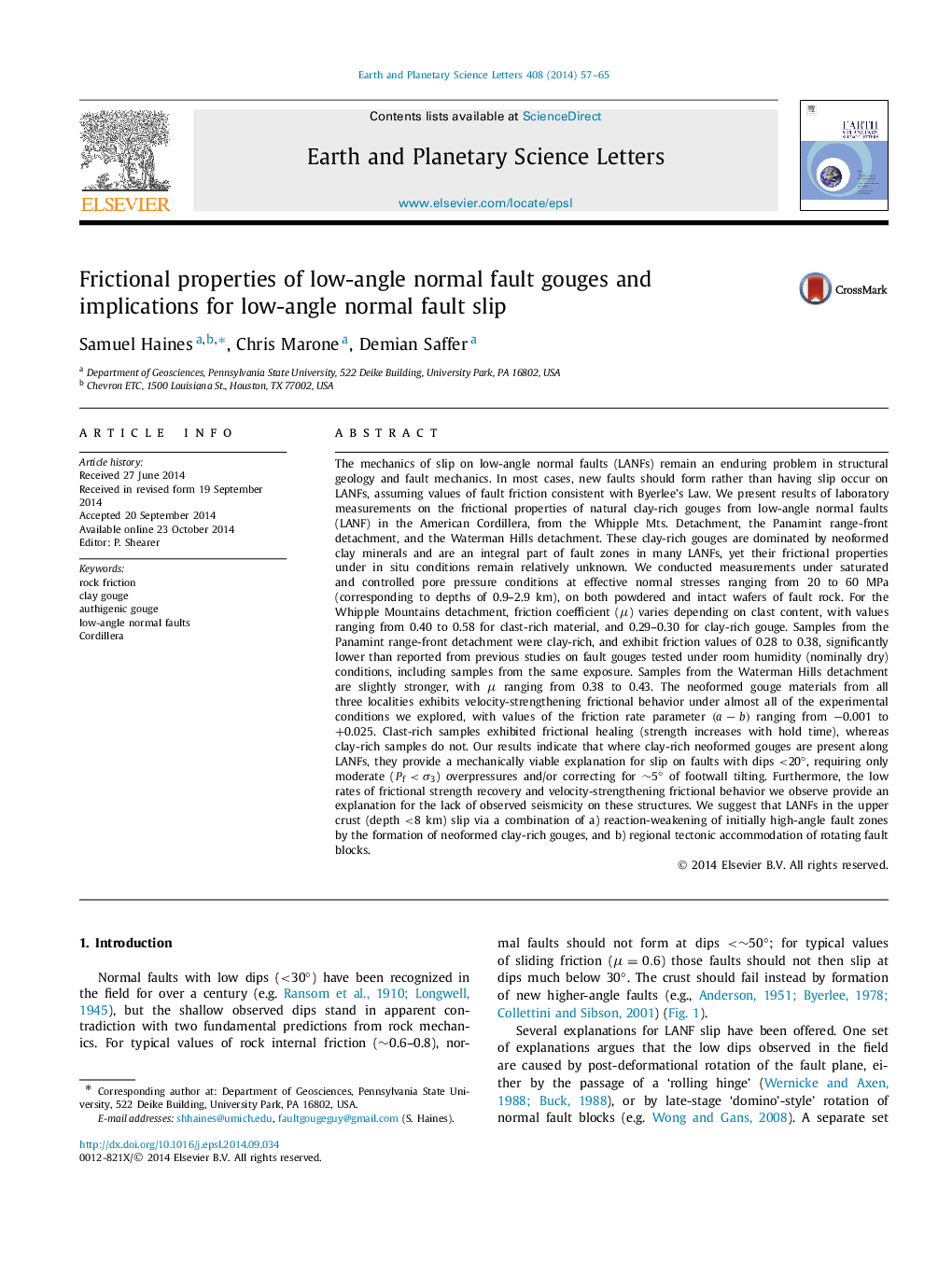| کد مقاله | کد نشریه | سال انتشار | مقاله انگلیسی | نسخه تمام متن |
|---|---|---|---|---|
| 6428673 | 1634748 | 2014 | 9 صفحه PDF | دانلود رایگان |
- Low-angle normal fault authigenic clay-rich gouges are frictionally weak.
- Saturated gouges are much weaker than dry gouges.
- Slip on LANFs at or near current dips is possible with moderate overpressures.
The mechanics of slip on low-angle normal faults (LANFs) remain an enduring problem in structural geology and fault mechanics. In most cases, new faults should form rather than having slip occur on LANFs, assuming values of fault friction consistent with Byerlee's Law. We present results of laboratory measurements on the frictional properties of natural clay-rich gouges from low-angle normal faults (LANF) in the American Cordillera, from the Whipple Mts. Detachment, the Panamint range-front detachment, and the Waterman Hills detachment. These clay-rich gouges are dominated by neoformed clay minerals and are an integral part of fault zones in many LANFs, yet their frictional properties under in situ conditions remain relatively unknown. We conducted measurements under saturated and controlled pore pressure conditions at effective normal stresses ranging from 20 to 60 MPa (corresponding to depths of 0.9-2.9 km), on both powdered and intact wafers of fault rock. For the Whipple Mountains detachment, friction coefficient (μ) varies depending on clast content, with values ranging from 0.40 to 0.58 for clast-rich material, and 0.29-0.30 for clay-rich gouge. Samples from the Panamint range-front detachment were clay-rich, and exhibit friction values of 0.28 to 0.38, significantly lower than reported from previous studies on fault gouges tested under room humidity (nominally dry) conditions, including samples from the same exposure. Samples from the Waterman Hills detachment are slightly stronger, with μ ranging from 0.38 to 0.43. The neoformed gouge materials from all three localities exhibits velocity-strengthening frictional behavior under almost all of the experimental conditions we explored, with values of the friction rate parameter (aâb) ranging from â0.001 to +0.025. Clast-rich samples exhibited frictional healing (strength increases with hold time), whereas clay-rich samples do not. Our results indicate that where clay-rich neoformed gouges are present along LANFs, they provide a mechanically viable explanation for slip on faults with dips <20°, requiring only moderate (Pf<Ï3) overpressures and/or correcting for â¼5° of footwall tilting. Furthermore, the low rates of frictional strength recovery and velocity-strengthening frictional behavior we observe provide an explanation for the lack of observed seismicity on these structures. We suggest that LANFs in the upper crust (depth <8 km) slip via a combination of a) reaction-weakening of initially high-angle fault zones by the formation of neoformed clay-rich gouges, and b) regional tectonic accommodation of rotating fault blocks.
201
Journal: Earth and Planetary Science Letters - Volume 408, 15 December 2014, Pages 57-65
